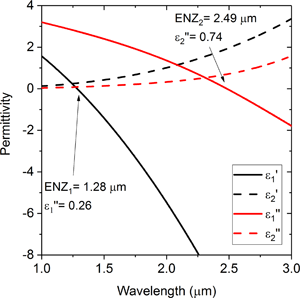Article contents
Tunable indium tin oxide for metamaterial perfect absorbers and nonlinear devices
Published online by Cambridge University Press: 24 August 2020
Abstract

Indium tin oxide (ITO) has become a very useful plasmonic and nonlinear optical material because of its highly tunable electrical and optical properties and strong optical nonlinearity. In this work, the authors conducted detailed fabrication process studies by using high-temperature reactive sputtering to finely tune the optical properties of ITO thin films, particularly the epsilon-near-zero (ENZ) wavelength in the near and mid-IR spectrum. Sputtered ITO thin films are characterized by using spectroscopic ellipsometry, surface profilometry, Hall measurements, and 4-point probe testing. Additionally, the effect of post-deposition annealing of ITO films is also investigated.
- Type
- Research Letters
- Information
- Copyright
- Copyright © The Author(s), 2020, published on behalf of Materials Research Society by Cambridge University Press
References
- 7
- Cited by



